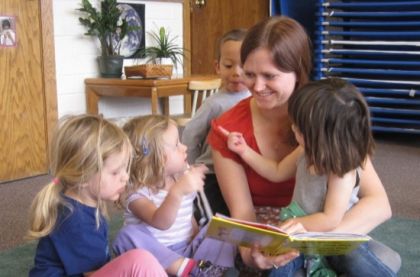The Magic of Observation
What has allowed Montessori to stand the test of time? What has protected the method that first began in 1907? Many methods of education have been tried and tested for years in the United States but Montessori is one program that has not only stayed around, but is growing and receiving more recognition than ever. Montessori schools, including those in the public sector, are on the rise in the United States of America.
Most Montessorians will agree that beneath many layers the most basic element continues to exist. This simple concept that gives heed to the needs of the child is that of observation.

“The Montessori Method continues to serve children well because it is based on the scientific observation of individual children….The lessons, the materials, that careful order of presentation, work because, and only because, they respond to the observed needs of the individual child. Montessori requires consistent and objective research into the conditions of each child. Montessorians often seek peace first and precision later. But it is through the specificity of unbiased observation that our compassion emerges for each child we serve. It is by understanding the needs of each child, as a unique and concrete individual, that we see his humanity.”
Catherine McTamaney, The Tao of Montessori.
Montessori teachers are carefully trained in the skill of observation. Preparation of the environment, lesson plans, and daily scheduling are all reliant on their precise understanding of the needs of the children, which comes through observation. Through observation they gain the full picture and see any outlying factors that might affect a students learning patterns or behavior. Once a new concept is presented and practiced by a child, the adult is responsible to watch the child and ask “does the child do what they have been taught to do?” Again, this can apply to their practice of the materials and concepts in the classroom but is also applicable to behavior, social interactions, etc. Montessori teachers are also taught to think twice before interfering with anything a child is doing. Is the action purposeful and intentional? Is anyone or anything being harmed? Is their opportunity for growth?
In addition to the careful observation of the Montessori teacher, we encourage observation by the child in a Montessori environment. Through observation, children learn more than one way of doing things. They also learn the important and essential skill of patience. Children are encouraged to stop and think. As they learn to observe, they give themselves time to evaluate and think of outcomes. Observation is a beautiful skill for our young people as it allows them the ability to see the perspectives of others and the recognition that there can be more than one way. It supports the idea that we teach children to learn to think and love to learn.